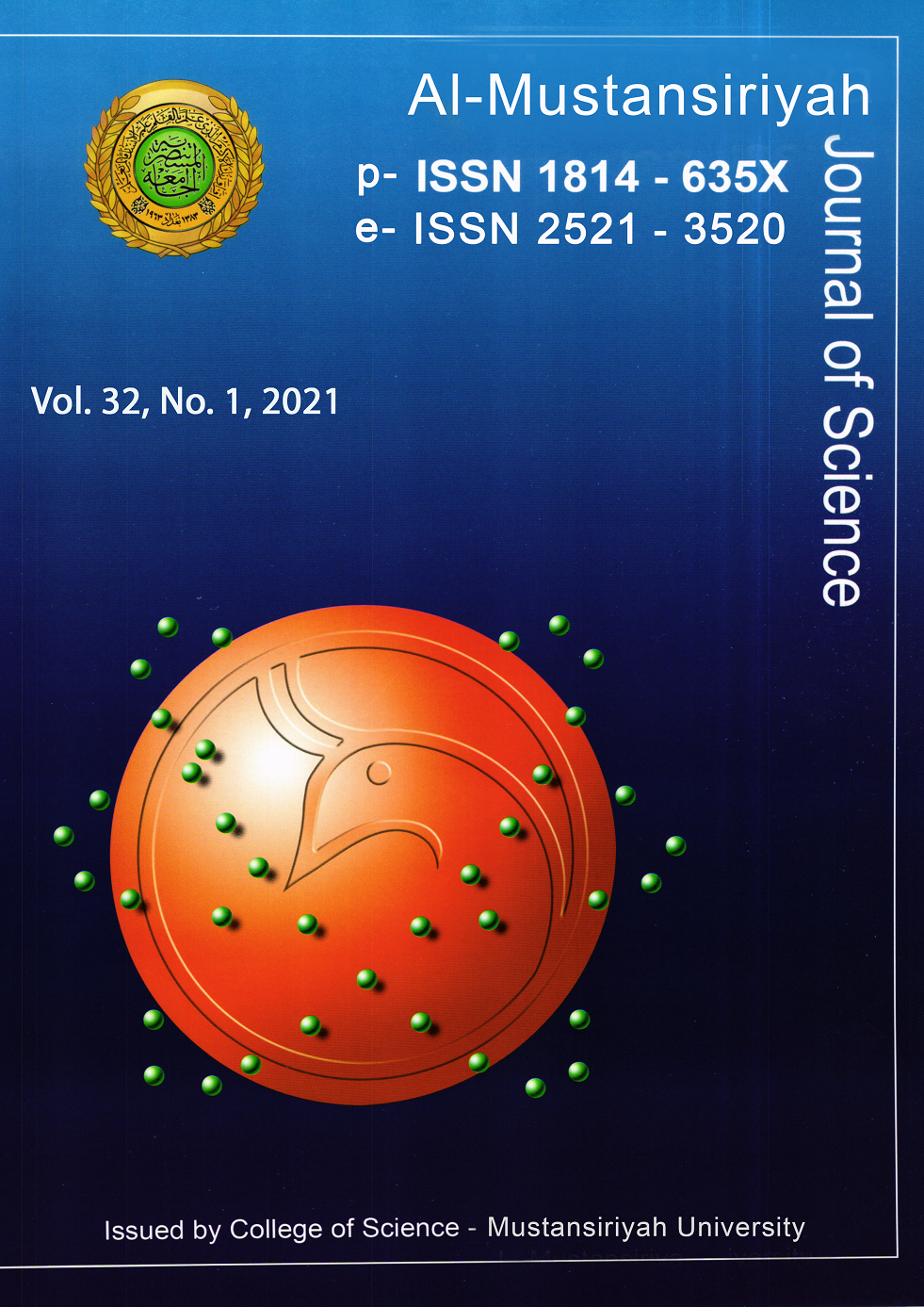The Antimicrobial Activity of Quercus Infectoria Extracts Against Bacteria Isolated from Wounds Infection
DOI:
https://doi.org/10.23851/mjs.v32i1.919Keywords:
wound inflammation, Q.infectoria.Abstract
Bacteria that cause wound infections were isolated and diagnosed from patients, who were hospitalized at the Martyr Al-Sadr Hospital from October 2019 to April 2020. Antibacterial effect of Quercus infectoria extract (aqueous and alcoholic) on the isolated bacteria has been studied. The results showed that the alcoholic extract has a higher antibacterial effect than the aqueous extract against Gram-positive bacteria like Staphylococcus aureus, Staphylococcus epidermidis, and Staphylococcus saprophyticus except Micrococcus roseus, which the effect of aqueous extract was higher than alcoholic extract, whereas aqueous and alcoholic extracts showed the same effect against Streptococcus sp.. The alcoholic extract has higher antibacterial effect than the aqueous extract against Gram-negative bacteria (Escherichia coli, Pseudomonas sp., Enterococcus faecalis, Shigella dysnteriae, Enterobacter sakazkii, citrobcter freundii and Alcaligenes faecalis) except proteus sp., which the aqueous extract was higher than alcoholic extract.
Downloads
References
M. Ghoncheh, Z. Pournamdar, H. Salehiniya, Incidence and mortality and epidemiology of breast cancer in the world. Asian Pac J Cancer Prev. 2016, vol 17(S3), pp:43-6.
BA. Rasool Hassan, Medicinal plants (importance and uses). Pharmaceut Anal Acta. 2012, vol 3(10), pp:2153-435.
Anonymous, The Wealth of India: A Dictionary of Indian Raw Materials and Industrial Products, 13 volume series. Publications & Information Directorate (CSIR), New Delhi, 1995, pp: 351.
I.M. Shihata, A pharmacological study of Anagallis arvensis. M.D. Vet, Thesis, Cairo University (Cited by Al- Doori). 1951 .
J. Vandepitte, K. Engback, P. Piot, C. Heuck, Basic microbiology procedures in clinical bacteriology. World Health Organisation, Geneva. 1991.
Šovčíková, M. Mikulášová, K. Horáková, Antibacterial and mutagenic activities of new isothiocyanate derivatives. Folia microbiologica. 2001 Apr 1, vol 46(2), pp:113.
G. Trease, M. Evans, Pharmacopoeial and related drugs of biological origin. A Textbook of Pharmacognosy, 15th ed. London, WB Saunders. 2001, pp:262.
CK. Leach, The phenolic contents of some British cynipid galls. Cecidology. 1986, vol 1, pp:10-2.
MS. Dar, M. Ikram, Studies on Quercus infectoria; isolation of syringic acid and determination of its central depressive activity. Planta medica. 1979 Feb, vol 35(02), pp:156-61.
CK. Kokate Practical Pharmacognosy, New Delhi:Vallabh prakashan, 1994. p. 107-111
DF. Basri,SH Fan, The potential of aqueous and acetone extracts of galls of Quercus infectoria as antibacterial agents. Indian journal of Pharmacology. 2005 Jan 1, vol 37(1), pp:26.
NN. Hussein, The Antimicrobial Activity of Some Medical Plants Extracts Used Against Some Types of Bacteria that Causes Urinary Tract Infection. Al-Mustansiriyah Journal of Science. 2017, vol 28(3), pp:72-84.
T. Leela ,C. Satirapipathkul, Studies on the antibacterial activity of Quercus infectoria galls. InInternational Conference on Bioscience, Biochemistry and Bioinformatics, 2011, vol. 5, pp: 410-414).
DF. Basri, LS. Tan, Z. Shafiei, NM. Zin, In vitro antibacterial activity of galls of Quercus infectoria Olivier against oral pathogens. Evidence-Based Complementary and Alternative Medicine. 2012 Jan 1.
Downloads
Key Dates
Published
Issue
Section
License
(Starting May 5, 2024) Authors retain copyright and grant the journal right of first publication with the work simultaneously licensed under a Creative Commons Attribution (CC-BY) 4.0 License that allows others to share the work with an acknowledgement of the work’s authorship and initial publication in this journal.






















